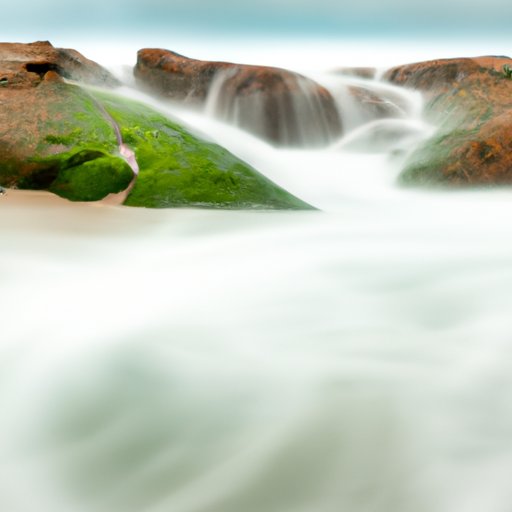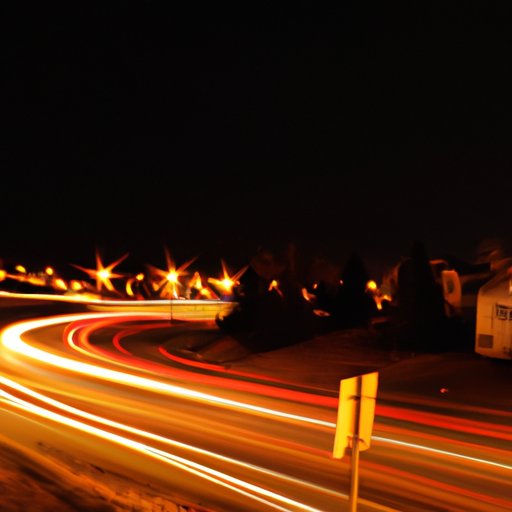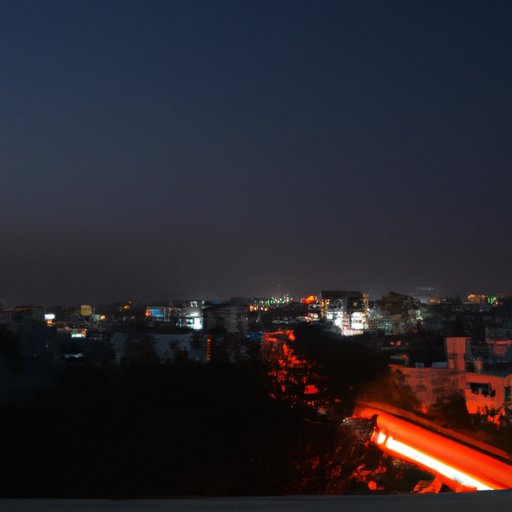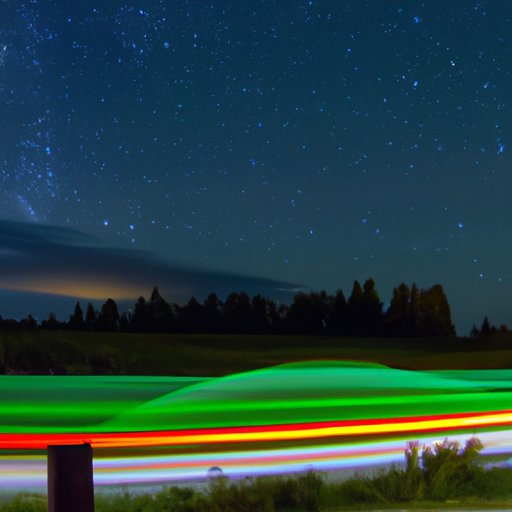Introduction
Long exposure photography is a technique used to create beautiful and unique photographs that capture movement and a sense of time. It involves using a slow shutter speed to capture a single image over an extended period of time, often several seconds or even minutes. The result is a photo that shows the passage of time or movement in a still image. This type of photography can be used to create stunning photos of landscapes, cityscapes, people, and night skies.
Explaining Long Exposure Photography: A Beginner’s Guide
If you’re new to long exposure photography, you may be wondering what exactly it is and how to get started. Here’s a beginner’s guide to understanding the basics of long exposure photography and how to achieve amazing results.
Basic Techniques for Shooting Long Exposures
The key to successful long exposure photography is understanding the relationship between shutter speed, ISO, and aperture. Shutter speed refers to the amount of time that the camera’s shutter is open when capturing an image. A longer shutter speed will allow more light into the camera and create a brighter image. However, if the shutter speed is too long, the image will become overexposed. The ISO controls the sensitivity of the camera’s sensor to light, while the aperture controls the amount of light that enters the lens. Together, these three settings determine the exposure of the image.
Choosing the Right Camera Gear for Long Exposure Photography
In order to achieve the best results with long exposure photography, it’s important to have the right camera gear. A digital single-lens reflex (DSLR) camera is ideal for this type of photography because it allows you to manually adjust the shutter speed, ISO, and aperture. You’ll also need a sturdy tripod to keep your camera steady during long exposures. Finally, you may want to invest in a neutral density filter, which reduces the amount of light entering the lens, allowing you to use a longer shutter speed without overexposing the image.

How to Achieve Amazing Results with Long Exposure Photography
Once you understand the basics of long exposure photography and have the right camera gear, you can start experimenting with different settings to achieve amazing results. Here are some tips for achieving stunning photos with long exposure photography.
Understanding Light and Shutter Speed
Light is a critical element of long exposure photography, so it’s important to understand how light affects your images. When shooting during the day, you’ll need to use a slower shutter speed to capture enough light and avoid overexposing the image. Conversely, when shooting at night, you can use a faster shutter speed to capture the stars and other elements of the night sky.
Capturing Movement in a Still Image
One of the most interesting aspects of long exposure photography is the ability to capture movement in a still image. By using a slow shutter speed, you can capture the movement of clouds, waterfalls, cars, and people in a single image. This creates a surreal effect that can add depth and interest to your photos.
Playing with Contrast and Color
Long exposure photography can also be used to create stunning photos by manipulating contrast and color. By adjusting the shutter speed and ISO, you can create stark contrasts between light and dark areas or bring out subtle colors in a scene. This can add a dramatic effect to your photos and make them stand out from the crowd.
Capturing the Magic of Night Skies with Long Exposure Photography
One of the most popular uses for long exposure photography is capturing the beauty of night skies. From stars and galaxies to the Northern Lights, there are a variety of elements of the night sky that can be captured with long exposure photography. Here are some tips for capturing stunning night sky photos.
Tips for Capturing Stars in Photos
When shooting stars, it’s important to use a fast shutter speed to avoid overexposure. Start by setting your ISO to 400 and your aperture to f/4. Then, experiment with different shutter speeds until you find one that captures the stars without overexposing the image. Keep in mind that the longer the shutter is open, the more star trails will appear in your photo.
Capturing the Milky Way
The Milky Way is one of the most stunning sights in the night sky. To capture this majestic view, you’ll need to use a wide-angle lens with a fast shutter speed. Set your ISO to 800 and your aperture to f/2.8. Then, experiment with different shutter speeds until you find one that captures the Milky Way without overexposing the image.
Capturing Northern Lights
The Northern Lights are one of the most beautiful natural phenomena and can be captured with long exposure photography. To achieve the best results, use a wide-angle lens with a fast shutter speed. Set your ISO to 1600 and your aperture to f/2.8. Experiment with different shutter speeds until you find one that captures the Northern Lights without overexposing the image.
Creative Techniques for Using Long Exposure Photography
Long exposure photography can also be used to create unique and creative photos. Here are some creative techniques for using long exposure photography to take stunning photos.
Light Painting
Light painting is a creative technique for using long exposure photography to create stunning images. To create light paintings, you’ll need to use a long shutter speed and a light source such as a flashlight or sparkler. Simply move the light source around the scene to create patterns and designs that will be captured in the final image.
Waterfalls and Moving Water
Long exposure photography can be used to capture the beauty of moving water. To capture this stunning effect, use a long shutter speed and a tripod to keep your camera steady. The longer the shutter speed, the more the moving water will blur and create a silky effect in the image.
Fireworks
Fireworks are one of the most popular subjects of long exposure photography. To capture the beauty of fireworks, set your ISO to 100 and your aperture to f/8. Then, experiment with different shutter speeds until you find one that captures the fireworks without overexposing the image.

Tips and Tricks for Mastering Long Exposure Photography
Once you understand the basics of long exposure photography, there are a few tips and tricks that can help you take your photos to the next level. Here are some tips and tricks for mastering long exposure photography.
Choosing the Right ISO and Aperture
Choosing the right ISO and aperture is essential for achieving the best results with long exposure photography. Generally, you’ll want to keep your ISO as low as possible and your aperture as wide as possible. This will ensure that your images are not overexposed and that you’re able to capture the most light possible.
Using Neutral Density Filters
Neutral density filters are a great tool for long exposure photography. They reduce the amount of light entering the lens, allowing you to use a longer shutter speed without overexposing the image. They also help to reduce glare and reflections, creating a softer, more even light.
Working with Tripods
A tripod is essential for long exposure photography because it keeps your camera steady and prevents any blurring or camera shake. Make sure to use a sturdy tripod and use the timer setting on your camera to minimize any camera movement when taking the photo.
Knowing When to Use a Timer
Using a timer can be helpful when taking long exposure photos. This ensures that the camera won’t move when taking the photo, resulting in a sharper image. It’s also useful if you’re trying to capture moving objects in the frame, such as stars or light trails.
The Art of Capturing Motion with Long Exposure Photography
Long exposure photography can be used to capture the beauty of motion in a still image. Here are some tips for capturing stunning photos of moving objects with long exposure photography.
Capturing Light Trails
Light trails are created when a light source moves across the frame during a long exposure. To capture this effect, use a slow shutter speed and a tripod to keep your camera steady. Experiment with different shutter speeds until you find one that captures the desired amount of light trails.
Capturing Car Streaks
Car streaks are created by capturing the movement of cars during a long exposure. To achieve this effect, set your ISO to 400 and your aperture to f/8. Then, experiment with different shutter speeds until you find one that captures the desired amount of car streaks.
Capturing People in Motion
People in motion can be captured with long exposure photography to create unique and stunning photos. To capture this effect, use a slow shutter speed and a tripod to keep your camera steady. Experiment with different shutter speeds until you find one that captures the desired amount of movement.

Unveiling the Magic of Long Exposure Photography
Now that you understand the basics of long exposure photography, it’s time to start exploring its possibilities. Here are some tips for uncovering the magic of long exposure photography.
Appreciating the Beauty of Long Exposure Photography
Long exposure photography can be used to capture stunning scenes that would otherwise go unnoticed. Take time to appreciate the beauty of long exposure photography and explore the unique effects that can be achieved with this technique.
Finding Inspiration from Professional Photographers
There are many talented photographers who specialize in long exposure photography. Take some time to browse through their work and find inspiration for your own photos. You may even find ideas for creative techniques or unique subjects to photograph.
Experimenting with Different Types of Long Exposure Photography
Long exposure photography is a versatile technique that can be used to capture a variety of subjects. Experiment with different types of long exposure photography and explore the possibilities of this technique.
Conclusion
Long exposure photography is a fascinating and rewarding technique for capturing stunning images. From capturing the beauty of night skies to playing with light and motion, long exposure photography can be used to create unique and stunning photos. With a bit of practice and experimentation, you’ll soon be mastering the art of long exposure photography.
(Note: Is this article not meeting your expectations? Do you have knowledge or insights to share? Unlock new opportunities and expand your reach by joining our authors team. Click Registration to join us and share your expertise with our readers.)
